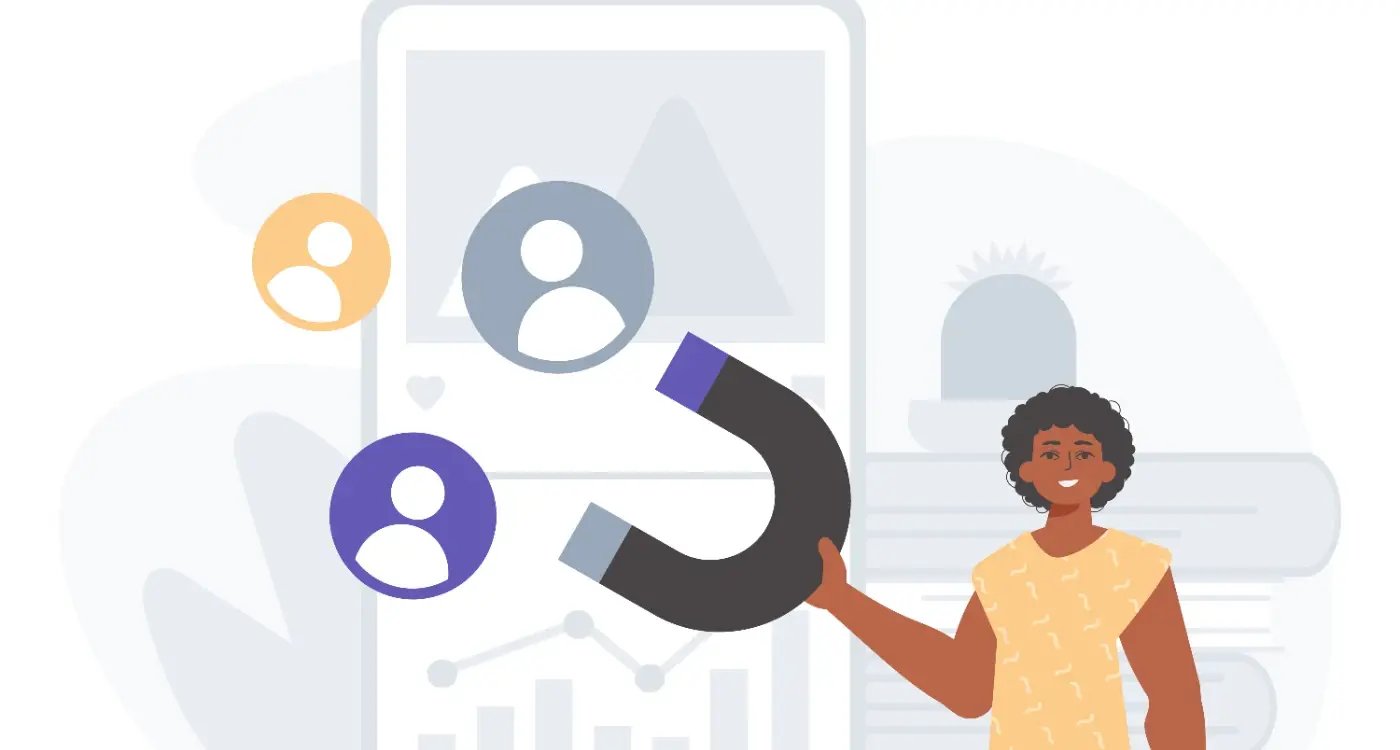Which Competitor Monitoring Tools Actually Help App Growth?
Most app developers spend their days building features in complete darkness about what their competitors are actually doing—and it shows in their download numbers. After building apps for everything from fintech startups to major retail chains, I've watched countless teams make the same mistake: they focus so intensely on their own product that they miss obvious opportunities their competitors are already capitalising on.
Here's the thing though—competitor monitoring isn't about copying what everyone else is doing. That's a recipe for mediocrity. It's about understanding the market landscape so you can make smarter decisions about where to invest your development time and marketing budget. I mean, would you rather spend three months building a feature that users don't actually want, or use that time creating something that genuinely sets you apart?
The apps that grow fastest aren't necessarily the ones with the biggest budgets or the flashiest features—they're the ones that understand their competitive landscape well enough to spot gaps and opportunities before anyone else does.
But here's where most teams get it wrong. They either ignore their competition completely or they get obsessed with tracking every single metric they can find. Both approaches are honestly a waste of time. The real value comes from monitoring the right things in the right way, and then actually acting on what you discover. Over the years, I've tested pretty much every competitor monitoring tool out there—some are genuinely helpful, others are just expensive ways to procrastinate. This guide will show you which tools actually move the needle for app growth and which ones you can safely ignore.
Look, I'll be honest with you—most businesses are doing competitor monitoring completely wrong. They're collecting data for the sake of it, creating fancy spreadsheets that nobody looks at, and missing the actual insights that could transform their app's performance.
After years of helping clients navigate the app marketplace, I've seen what happens when you monitor competitors properly versus when you don't. The difference? It's not just about knowing what your competition is up to; it's about understanding the patterns that drive user behaviour across your entire market.
Beyond Surface-Level Metrics
Most people think competitor monitoring means checking download numbers and reading a few reviews. But that's like judging a book by its cover—you're missing the story underneath. The real value comes from understanding why certain features resonate with users, how pricing changes affect market dynamics, and what marketing messages actually convert.
When one of my clients noticed their main competitor was getting consistently higher ratings despite having fewer features, we dug deeper. Turns out, the competitor had nailed their onboarding flow—something our data wouldn't have revealed without proper analysis. That insight led to a complete redesign of the first-user experience, which boosted their retention rate by 40%.
Strategic Decision Making
Here's what actually matters: competitor monitoring should inform your product roadmap, pricing strategy, and marketing approach. It's not about copying what others do—it's about finding gaps in the market and understanding user expectations.
The apps that succeed long-term use competitor insights to make smarter bets about where to invest their development resources. They spot emerging trends before they become obvious, and they position themselves strategically rather than reactively.
Setting Up Your Monitoring Framework
Right, so you've decided competitor monitoring is worth your time—brilliant. But here's where most people go wrong; they jump straight into tools without actually thinking about what they want to achieve. I've seen countless app developers collect mountains of data about their competitors and then... well, nothing. They just sit there drowning in spreadsheets wondering why their downloads haven't magically increased.
The secret is building a proper framework first. Think of it as your monitoring blueprint—what you're tracking, why you're tracking it, and most importantly, what you'll actually do with the information. I always start with three simple questions: What decisions am I trying to make? What data do I need to make those decisions? How often do I need this information?
Define Your Monitoring Goals
Your monitoring goals should connect directly to your app's growth objectives. Are you trying to improve your app store ranking? Understand user sentiment? Spot new feature opportunities? Each goal requires different data and different tools. Here's what I typically focus on:
- App store performance and keyword rankings
- Feature releases and user reception
- Pricing changes and monetisation strategies
- User reviews and sentiment analysis
- Marketing campaigns and messaging
Set Your Monitoring Schedule
Don't try to monitor everything daily—you'll burn out quickly. App store rankings? Check weekly. Major feature updates? Monitor as they happen. User reviews? A quick scan every few days is enough unless there's a crisis brewing.
Start small with just 2-3 direct competitors and expand gradually. It's better to monitor a few competitors really well than to half-heartedly track dozens.
The key is consistency over intensity. Set up a simple routine you can actually stick to, and your competitive intelligence will start paying dividends within weeks.
Essential App Store Intelligence Tools
Right, let's talk about the tools that actually work. I've tried dozens of app store intelligence platforms over the years, and honestly? Most of them are bloody expensive and half the data isn't even accurate. But there are a few that genuinely help you understand what your competitors are doing.
App Annie—now called data.ai—is probably the most comprehensive platform out there. Sure, it's pricey, but if you're serious about competitor analysis, its worth every penny. You can track download estimates, revenue data, and see exactly which keywords your competitors are ranking for. The demographic breakdowns are particularly useful; I mean, knowing that your rival's user base is 60% female aged 25-34 can completely change your marketing approach.
Free Tools That Actually Work
For smaller budgets, App Follow does a decent job tracking rankings and reviews across multiple countries. The interface isn't the prettiest, but the data is solid and you can set up alerts when competitors update their apps or change their App Store descriptions.
Sensor Tower sits somewhere in the middle—more affordable than data.ai but with better features than the free options. Their keyword intelligence tool is particularly good at showing you which terms are driving downloads for your competitors. I've used it to uncover keywords that we'd never considered, which led to some surprisingly effective ASO wins.
Here's the thing though: don't get caught up in having the perfect tool. I've seen companies spend months evaluating platforms while their competitors are busy shipping updates and stealing market share. Pick one that fits your budget, learn it properly, and focus on acting on the insights rather than collecting more data.
User Review and Rating Analysis
Right, let's talk about something that most app developers get completely wrong—monitoring competitor reviews. I see teams obsessing over star ratings like they're the holy grail, but honestly? That's missing the point entirely. The real gold is buried in what users are actually saying, not just how many stars they're clicking.
When I'm setting up review monitoring for clients, we're not just tracking average ratings. We're looking for patterns in complaints, feature requests that keep coming up, and—here's the clever bit—praise for things our app doesn't do yet. One client discovered their biggest competitor was getting slammed for poor customer service response times; we made lightning-fast support our key differentiator and it worked brilliantly.
What Actually Matters in Reviews
The tools that work best here are the ones that can categorise sentiment and extract themes. Sure, you could read through hundreds of reviews manually (I've done it, its mind-numbing), but smart monitoring tools can spot when competitor users start complaining about specific features or praising new updates.
The most valuable insights come from reading between the lines—what users wish existed but don't know how to ask for
I particularly love monitoring reviews during competitor app updates. Users are brutally honest when features break or when new releases don't meet expectations. This gives you a real-time window into their development priorities and user satisfaction levels. And let's be honest—sometimes the best product roadmap ideas come from reading what frustrated users wish your competitors would fix.
Social Media and Marketing Intelligence
Social media monitoring gives you the clearest picture of what your competitors are actually doing—not just what they're saying they're doing. I've seen too many app developers focus purely on App Store data whilst completely ignoring the marketing campaigns that drive those downloads in the first place.
The thing is, most competitor analysis tools only show you the end result. But social media intelligence shows you the strategy behind those results. When a competitor suddenly jumps up the charts, you can trace it back through their social campaigns, influencer partnerships, and paid advertising to understand exactly how they did it.
What to Track on Social Platforms
I always tell clients to monitor more than just post engagement. Sure, likes and comments matter, but the real gold is in understanding their content strategy, posting frequency, and audience response patterns. Tools like Brand24 and Mention can track competitor mentions across platforms, but honestly? Sometimes just setting up Google Alerts and manually checking their profiles weekly gives you better insights.
- Posting frequency and optimal timing patterns
- Content types that generate the most engagement
- Influencer collaborations and sponsored content
- User-generated content campaigns
- Crisis management and customer service responses
- Hashtag strategies and community building efforts
The biggest mistake I see is treating social media monitoring as a passive activity. You need to actively engage with the data—screenshot high-performing posts, analyse their copy, understand their visual style. When you see a competitor's post go viral, dig deeper. What made it work? Can you adapt that approach for your own audience?
Social intelligence isn't about copying what competitors do; its about understanding the market conversation around your app category and finding your own angle into that discussion.
Pricing and Monetisation Tracking
Right, let's talk about money—because that's what this is all about, isn't it? Tracking how your competitors make their cash can give you some proper insights into what might work for your own app. I've seen too many developers guess at pricing strategies when the data is sitting right there waiting to be analysed.
The tricky bit with monetisation tracking is that most of the juicy financial data isn't public. You can't just peek at someone's bank account and see exactly how much they're making from in-app purchases. But there are ways to piece together a pretty decent picture of what's working in your market.
Revenue Estimation Tools
Sensor Tower and App Annie (now data.ai) both offer revenue estimates that can give you a ballpark figure of what competitors are earning. Are these numbers perfect? Absolutely not. But they're good enough to spot trends and see which monetisation models are gaining traction in your space.
What I find really useful is tracking pricing changes over time. When a competitor drops their premium tier from £9.99 to £4.99, that tells you something about market resistance or their conversion rates. When they add a new subscription tier, they've probably found a gap in their monetisation funnel.
Set up monthly price monitoring for your top 5 competitors. Create a simple spreadsheet tracking their subscription tiers, one-time purchases, and any promotional pricing. You'll start spotting patterns within 3 months.
| Monetisation Model | What to Track | Key Insights |
|---|---|---|
| Freemium | Free vs paid feature split | Conversion funnel strategy |
| Subscription | Tier pricing, trial periods | Market price sensitivity |
| In-app purchases | Item pricing, bundle offers | User spending patterns |
The real gold is in understanding why competitors make pricing changes. A sudden shift to subscription-only usually means they've cracked user retention. New premium features often signal where they see the most user demand.
Feature and Update Monitoring
Right, lets talk about something that can make or break your competitive strategy—keeping track of what features your rivals are actually shipping. I've seen too many app teams get blindsided because they weren't paying attention to their competitors' update cycles. Sure, you can set up Google Alerts and hope for the best, but that's like trying to catch fish with your bare hands.
The reality is that most apps update every 2-4 weeks these days, and each update tells a story about where that company is heading. When you see a competitor suddenly adding dark mode, improving their onboarding flow, or integrating a new payment method, that's not random—its strategic. They've identified a problem or opportunity that you might be missing entirely.
Tools That Actually Track Feature Changes
AppFollow does a decent job of monitoring app store updates and changelogs, but honestly? The best intelligence comes from actually using your competitors apps regularly. I know it sounds basic, but you'd be surprised how many teams skip this step. Set up accounts, go through their user flows, and document what changes.
For the technical side, tools like Apptopia can show you SDK changes and new integrations before they're publicly announced. When a competitor adds a new analytics SDK or payment processor, you'll know they're planning something big.
What Changes Actually Matter
Not every feature update deserves your attention. Focus on changes that affect core user journeys—onboarding, checkout processes, content discovery, or retention features like push notifications. If three competitors all add the same type of feature within six months, that's not coincidence; thats market validation you can't ignore.
Measuring What Actually Matters
I've seen too many teams get completely lost in vanity metrics when it comes to competitor monitoring. They'll spend hours tracking every single download number and obsessing over App Store rankings that shift daily. But honestly? Most of that data won't help you make better decisions about your own app.
The key metrics for analysing rival mobile apps are the ones tied directly to user behaviour and business outcomes. When I'm setting up analytics for clients, I focus on retention rates first—how long are users sticking around after they download your competitor's app? That tells you whether their user experience is genuinely working or if they're just good at marketing.
The most successful apps I've built weren't trying to beat competitors on every metric; they were laser-focused on doing one thing better than anyone else in their space.
Focus on Actionable Intelligence
Revenue per user, feature adoption rates, and user engagement patterns—these are the metrics that should keep you up at night, not download rankings. I always tell my clients to track what their competitors are doing with push notifications and in-app messaging. You can learn so much about their retention strategy just by signing up and watching how they try to bring you back.
Setting Smart Benchmarks
Don't try to monitor everything; you'll drown in data and miss the patterns that matter. Pick three to five key metrics that align with your business goals and track those consistently. I typically recommend monitoring competitor pricing changes, major feature releases, and user sentiment trends. These give you enough insight to make informed decisions without getting overwhelmed by every tiny fluctuation in the market.
Conclusion
After years of working with clients who've both succeeded and failed at competitor monitoring, I can tell you that the tools themselves are only half the battle. You could have access to every platform I've mentioned—and honestly, some of my most successful clients use just two or three of them well rather than trying to master everything.
The real difference comes down to consistency and action. I've seen teams collect mountains of competitor data but never actually use it to make decisions. They'll track every update, screenshot every feature change, and compile detailed reports that nobody reads. Meanwhile, their competitors are moving faster because they're focusing on what matters most.
Start small, genuinely. Pick one tool that matches your biggest pain point right now. If you're struggling with app store visibility, begin with something like AppTweak or SensorTower. If pricing is your main concern, start there. Get comfortable with the data, understand what it's telling you, and most importantly—act on it.
Remember that competitor monitoring isn't about copying what everyone else is doing; it's about understanding the market so you can make smarter decisions about where to differentiate. The best apps I've worked on used competitor insights to find gaps in the market, not to replicate existing solutions.
Building a successful app takes time, and monitoring your competition is just one piece of a much larger puzzle. But when done right, it can save you months of development time and help you avoid costly mistakes that could sink your app before it even gets started. That's worth the investment, isn't it?
Share this
Subscribe To Our Learning Centre
You May Also Like
These Related Guides

How Do You Benchmark App Performance Against Rivals?

What Makes Users Switch From Competitors to Your App?



